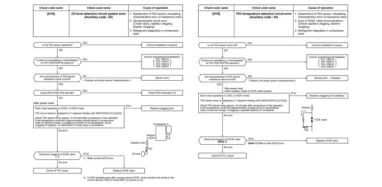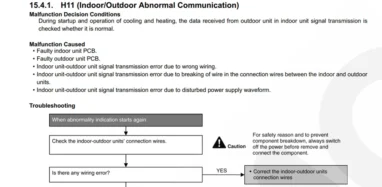People return to the comfort of their sweet homes after a hectic day. But the home may not be that sweet, as they should be, due to poor indoor air quality. Around 3.8 million people die of polluted indoor air, every year, across the world.
So, indoor air quality is immensely important especially in this corona-virus pandemic situation. Some researchers have linked the spread of the COVID19 virus to the HVAC system. Maybe you are also worried about indoor air quality. Here are some insights for you.
What is indoor aircon pollution?
With the increase in climate change, air conditioners have become the most sought-after. HVAC systems are used either for cooling down or warming up a place. While air conditioning makes life comfortable, they have many adverse side effects.
These complex systems use Chlorofluorocarbons (CFC) and Hydrofluorocarbon (HFC) as refrigerating agents. When released in the environment, they make holes in the ozone layers and cause ozone depletion causing global warming. Moreover, dirt, dust, and bacteria are accumulated in the ducts of the air conditioners over time.
Every time such unclean air conditioners are switched on, they release those into the indoor and cause air pollution. If you happen to live in an indoor with a central air conditioning system, things get trickier. They are also likely to bring in the outdoor polluted air indoor. This is why air quality test is necessary to know about pollution.
Causes of indoor aircon pollution
Increased use of air conditioning may cause pollution of indoor air. Windows are kept closed for buildings with air conditioning. While this decreases the outdoor air pollutants, it gives rise to the concentration of indoor pollutants.
In case the duct of the air conditioner is not cleaned, the dust, dirt, and mold accumulated in the duct, start circulating into the indoor causing reduction of indoor air quality. It is, therefore, important to change the air filter and clean the duct periodically. Using HEPA (High-Efficiency Particulate Air) filter makes the air conditioner more efficient for removing allergens from the indoor air.
If the evaporator coils of the air conditioner are not cleaned properly; it limits the airflow and contributes to poor indoor air quality. Moreover, there may gas leakage because of the corroded coil. This can turn the air toxic making indoor air quality testing vital.
How to measure indoor air quality
Indoor air quality refers to the quality of the air in the building for health concerns and the comfort quotient of the occupants. Several factors can be responsible for poor indoor air quality.
The problem is that the effect of some may be prominent shortly, and some may take years to show up. Plenty of culprits can cause poor indoor air quality. They may range from dust to molds, humidity, emissions, tobacco products, and many more.
To know how air quality is measured, knowledge of the major contaminants is essential. They are
- VOC: These are volatile organic compounds emitted mostly from household cleaning agents, disinfectants, etc.
- Carbon monoxide:This cannot be detected by our senses. Improper burning, especially poorly maintained generators, boilers, etc are the sources of this.
- Particulate matter:This includes the solid particles and liquid droplets suspended in the air. Because of their very small size, they are likely to be inhaled and cause many health hazards.
While knowing their presence helps in how to measure air pollution, one needs the right monitors to measure the indoor air quality parameters. Sensors are available for measuring the concentration of pollutants like VOC, Carbon monoxide, Particulate matter, humidity, and others.
They can be used to check their presence for staying within the safe limit. Sensors are also available to check HVAC functionalities. These are light in weight and can be installed anywhere in the building.
These sensors can collect data continuously and that can be analyzed to know the performance and the pattern. Thus, one can get indications if there is any deviation. It helps to take corrective actions immediately. Some monitors can also trigger off the air purifiers, dehumidifiers, etc for improving the quality of indoor air. Thus, all quality woes are removed.
How to improve indoor air quality
One must understand the air quality which makes it essential to test indoor air quality first. Indoor air quality improvement is based on indoor environment that contributes to the overall health of the occupants.
The simplest way to improve indoor air quality is to open the windows and fans for more ventilation. Creating cross ventilation also helps to improve air quality. This is greatly effective when an area gets overcrowded.
All air quality issues are not that simple. In cases with consistent unacceptable quality of air, theaction to be taken depends on various factors that emerge from the report of the indoor air quality monitor.
Improving the air quality is based on three approaches
- Controlling the source: Removing or controlling the source of air pollution is the best approach for improving indoor air quality. Many carpets emit volatile organic compounds. Getting a low-VOC carpet is a great way to reduce the VOC level of the indoor. If something is likely to contaminate the air, that should also be relocated to a well-ventilated place.
- Arranging adequate ventilation: Ventilation is a critical determinant of air quality. It is a combined process of bringing outside air in, circulating it in the indoor, and throwing out some portion of the indoor air outside. If any of these three processes do not perform to the desired level that deteriorates the indoor air quality. Problems occur when the ducts, diffusers, and grills get contaminated with dust and dirt. A thorough check of the HVAC system is necessary for improving indoor air quality.
- Cleaning the air: It is mostly employed for outside sources causing pollution. The approach is designed to clean the air by collecting pollutant particles. It is usually done in two ways. One is to collect the pollutants with the help of electrostatic charge, or, by using air filters.


